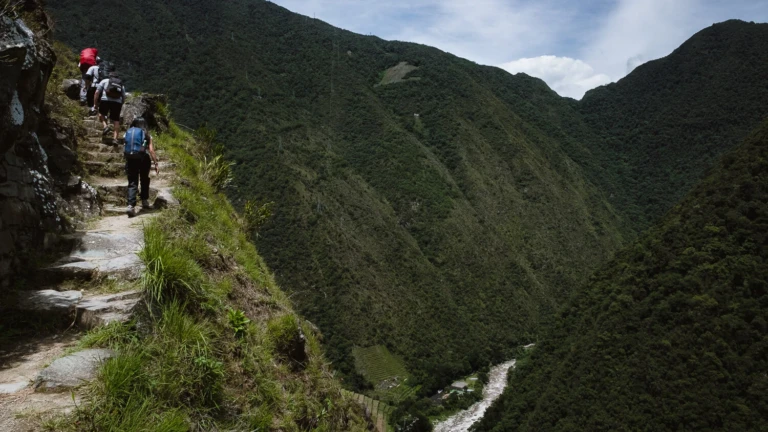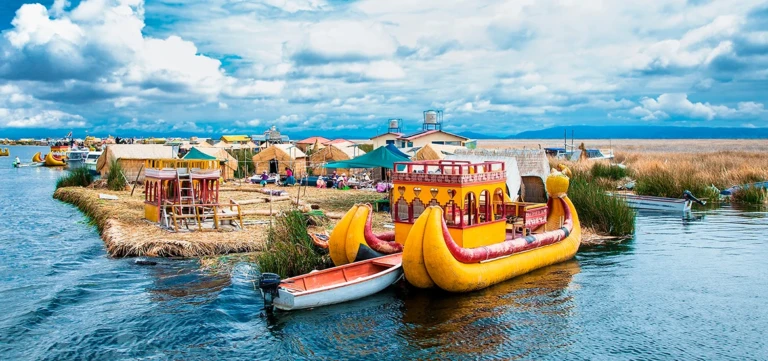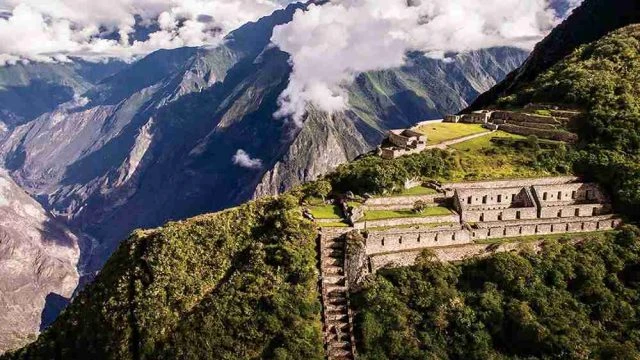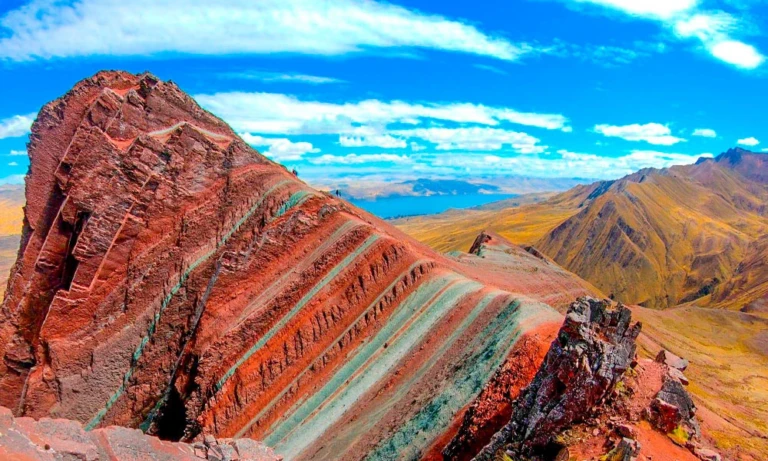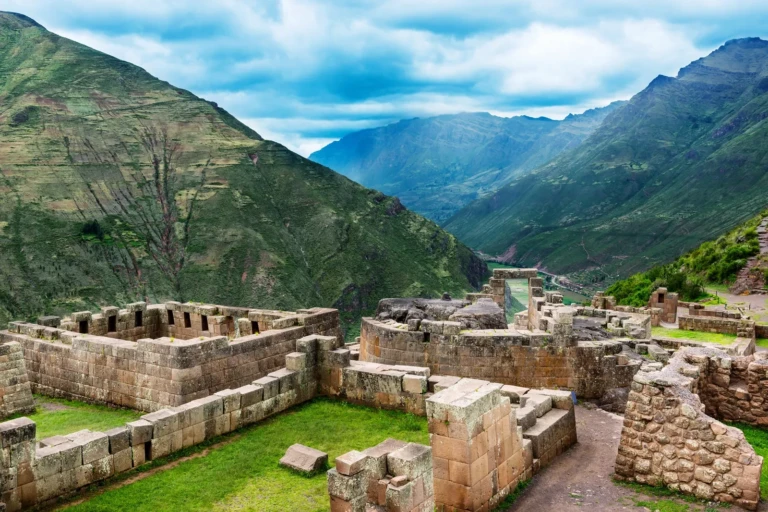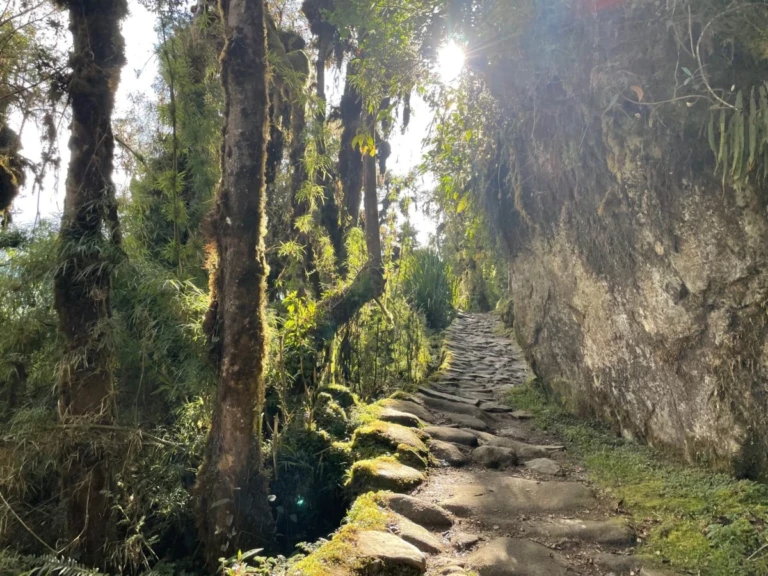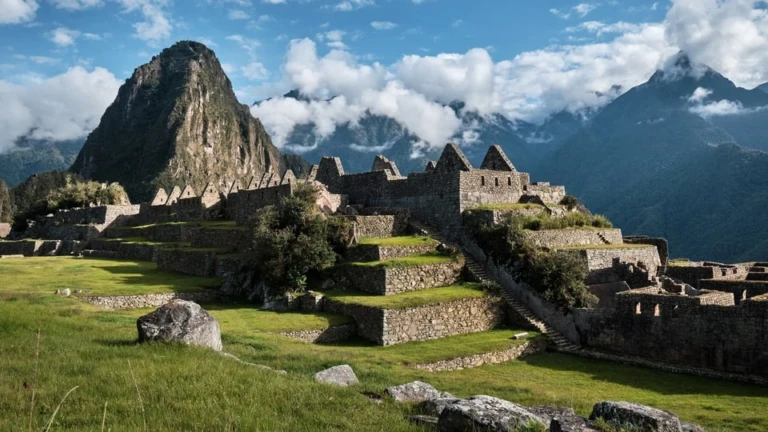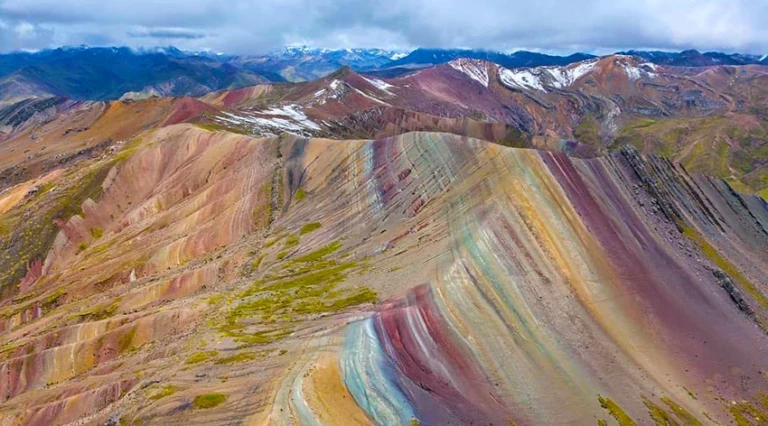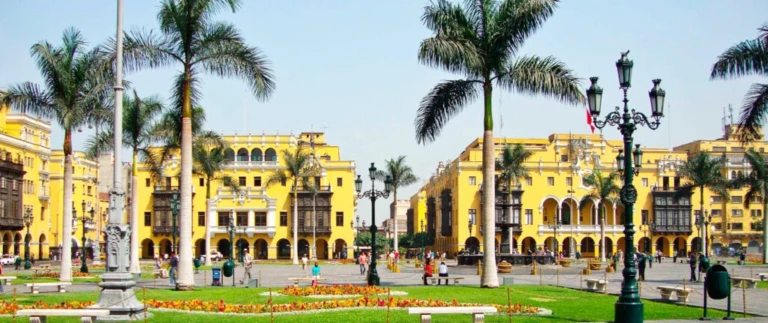Inca Trail to Machu Picchu 4days / 3 nights
SERVICE:
Inca Trail to Machu Picchu 4 days 3 nights, combines beautiful mountain scenery, lush cloud forest and subtropical forest, and an outstanding mix of Inca paving stones, ruins and tunnels. Descending through the magical sun gate on the last day will reveal the emerald peaks and the terraced ruins of the mysterious Inca city of Machu Picchu.
OVERVIEW:
Inca trail to Machu Picchu 4 day 3 nights to the lost city of the Incas and Machu Picchu is a magical adventure. Making this historical journey high into the Andes will hold special memories that stay with you the rest of your life.
By booking your Inca Trail to Machu Picchu 4 days 3 nights with Cachi life Peru you are choosing the best. Don’t believe us? Check out our reviews on TripAdvisor!
Inca Trail Availability:
We offer daily departures on the Inca Trail to Machu Picchu 4 days 3 nights (excluding February when the trail is closed).
Check Availability Here:
It is strongly recommended to book your Inca Trail to Machu Picchu 4 days 3 nights at least 4 months in advance as permits can quickly sell out.
Useful Information:
Starting Altitude – 2720m / 8920ft.
Highest Altitude – 4217m / 13,780ft.
Walking Distance – 42km / 26 miles
Longest Day – Day 2, approximately 16km / 9.9 miles
Coldest Night – Day 2 around 0o celsius
Overall Difficulty – Moderate
Pre-Trek Briefing
You will have an in-depth briefing with your guide 1 day before your Inca Trail to Machu Picchu 4 Days 3 Nights. Your guide will meet you at your hotel and you can take this opportunity to ask questions and make any final preparations.
Day 1: Cusco – Km 82 – Wayllabamba.
Today has a relatively relaxed start for the Inca Trail and the walking is easy going to help you settle in to the trek. Beginning at Kilometer (Km) 82 (2,720 m/ 8,922 ft), we slowly make our way along the banks of the Urubamba River with great views of the snow-capped peak of Mount Veronica (5,900 m/19,000 ft). There will be a variety of native plant and birdlife around us during this stretch.
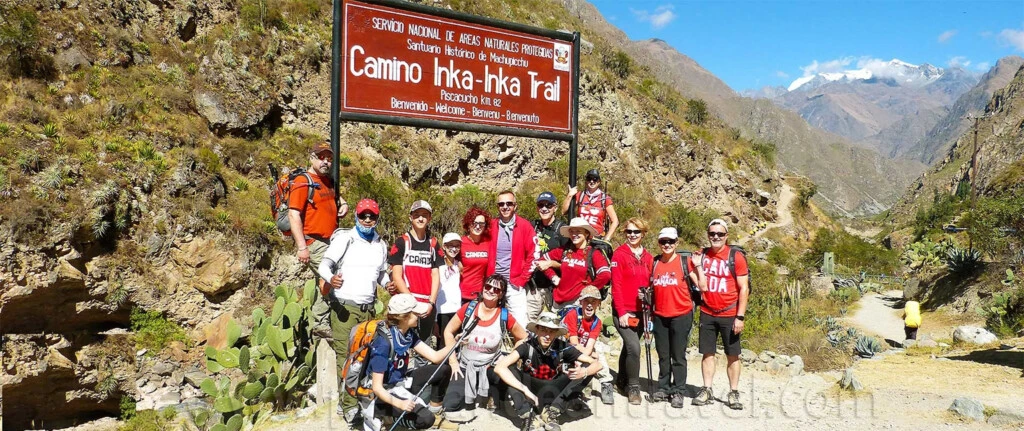
As we continue to follow the trail along fairly flat terrain, we arrive in the small community of Miskay. From here we will gradually ascend for 2 hours and finally see, from the tallest part of an overlook, the extensive Inca city of Llactapata. You will be able to view over the extensive Inca ruins of Llactapata (also
known as Patallacta on some maps). Llactapata means ‘upper town’ in Quechua and was first discovered by Hiram Bingham in 1911 and was primarily an agricultural station used to supply Machu Picchu with maize, the staple crop of the Incas. The settlement comprised over one hundred buildings, houses for the workers and soldiers, including five baths.
We will continue the Inca Trail hike on a path that follows the left bank of the river up to the small village of Wayllabamba (3,000m). The name in Quechua means ‘grassy plain’. We will spend the night here depending on the speed of the group. (This is the last place along the trek that you can buy snacks and drinks).
Meals: Lunch/Dinner
Distance Covered: 12 kilometers
Approximate Walking Time: 6 – 7 hours
Lowest elevation: 2,600 m/ 8,525 ft
Highest elevation: 2,950 m/9,676 ft
Difficulty: moderate
Day 2: Wayllabamba – Dead Woman’s Pass – Pacaymayo
After breakfast we will keep hiking the Classic Inca Trail as we climbing up from Wayllabamba following the left bank of the Llulluchayoc River, we arrive in ‘Tres Piedras’ (three stones). There is stream named after the Huayruro, which is an ornamental tree that has red and black seeds. Many of the porters from Ollantaytambo district are also known as Huayruros because of their traditional red and black ponchos.
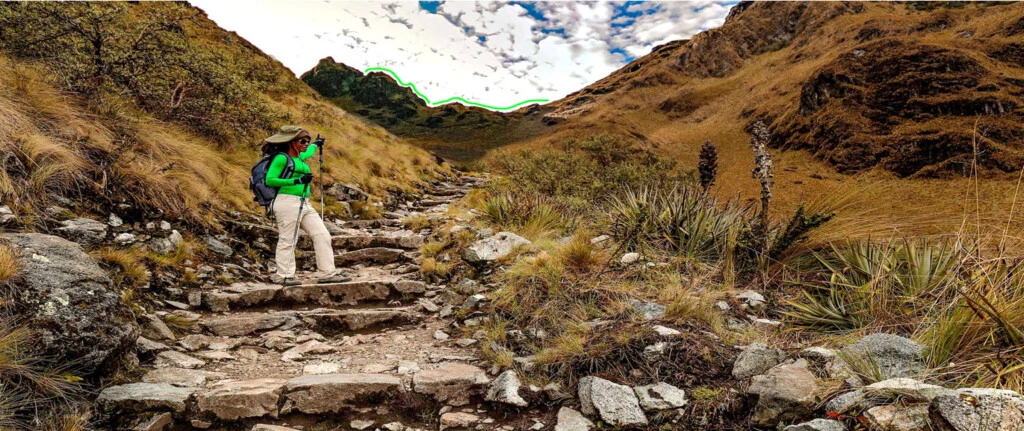
As we trek further up the Classic Inca Trail, we will begin to see spectacular terrain known as Llulluchapampa. We will walk another 2 hours uphill to the first and highest pass of the trail (Abra de Warmiwañusca or ‘Dead Woman’s Pass) at 4,215m. Hikers are exposed to the Andean elements:
first scorching sun and then, closer to the pass, freezing winds. Once at the top hikers can celebrate having completed the most difficult section of the Inca Trail to Machu Picchu.
The decent from the pass is steep but not difficult. We will follow the trail on the left side of the valley floor and spend our 2nd evening at the Pacaymayo campsite.
Meals: Breakfast/Lunch/Dinner
Distance Covered: 10 kilometers
Approximate Walking Time: 7 – 8 hours
Highest elevation: 4,215 m/13,821 ft
Difficulty: Challenge
Day 3: Pacaymayo – Runcurakay Pass – Phuyupatamarka – Wiñaywayna.
After breakfast, we continue our hike up the opposite side of the valley as we make our way towards the second pass on the trek. Along the way we have fantastic views of waterfalls and flora and fauna all around. Half way up we stop to have a quick visit to the Inca site of Runcuraccay (an Inca watchtower) and to catch our breath before we continue our climb to the pass (3,900 meters). From the pass we once again begin our descent heading back in to the cloud forest.
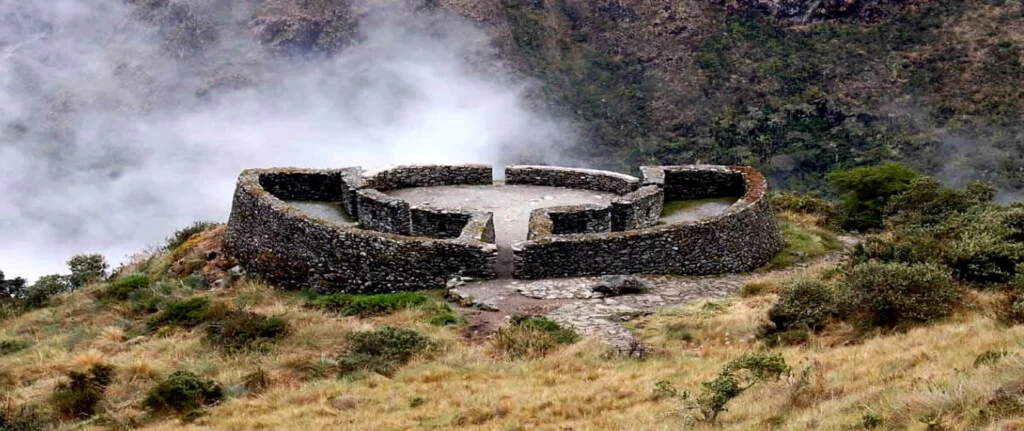
After about an hour we arrive to Sayacmarca, one of the most beautiful ruins on the Inca Trail where we ́ll have a guided tour for about an hour. From Sayacmarca we continue on down to our lunch spot at Chaquicocha (dry lake) where you can see some of the fantastic flora and fauna the Inca Trail has to offer. From Chaquicocha onwards we walk along Inca flat (gradual inclines) as we make our way to Phuyupatamarca (3680 meters). This area of the Inca Trail is stunning with beautiful views of the Vilcabamba mountain range in the distance and abundant flora and fauna all around. we ́ll get our first view of Machu Picchu mountain and the Urubamba river far below us. From Phuyupatamarca. We will then start our way down the long descending stone steps to Wiñaywayna 2,650m/8,692ft, where will be our camp site.
As we near the bottom of the staircase, we will visit the site of Intipata (Terraces of the Sun). This site has beautiful views of the Sacred Valley and was an important agricultural site for Machu Picchu. After Intipata, we will continue to Wiñaywayna, the archaeological site that is the largest on the Inca Trail besides Machu Picchu. It consists of an impressive complex made up of an agricultural center, with numerous terraces, a religious sector, and an urban sector. This site offers spectacular views over the already narrower Urubamba River valley
Meals: Breakfast/Lunch/Dinner
Distance Covered: 16 km
Approximate Walking Time: 8 – 9 hours
Highest elevation: 3,900m / 12,792 ft
Difficulty: Challenge
Day 4: Wiñaywayna – Sun Gate – Machu Picchu – Cusco
We will rise very early to complete the final stretch of the Inca Trail, which brings us to Inti Punku or the Sun Gate, the principal entrance of the crystal city of Machu Picchu. The trail here is fairly easy going and after about an hour we will arrive to Inti Punku (2,400 m/ 7,875 ft), an awesome location to observe the citadel of Machu Picchu and sunrise in the Andes.
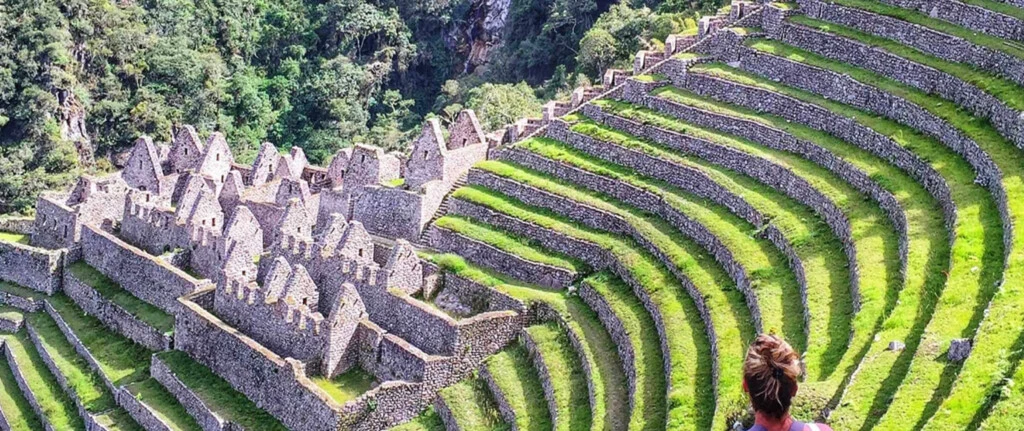
From Inti Punku it is a further 40 minute downhill hike to the citadel of Machu Picchu. We will go to the classic “photo” spot and take pictures once we arrive. Then there will be a short break prior to starting our tour of Machu Picchu. The tour will last two hours. If you have elected to climb Huayna Picchu Mountain you should select the 10 AM time spot.
When you are finished exploring the extraordinary city of Machu Picchu you will travel to Aguas Calientes by bus. You will then take the train from Aguas Calientes to Ollantaytambo where our private van will be waiting to transport you back to your hotel in Cusco. Arrival time in Cusco depends on the time of your train ticket.
Meals: Breakfast
Maximum altitude: 2700 m/ 8856 ft
Minimum altitude: 2,430 m/ 7,972 ft
Distance to walk: 6 km/ 3.73 miles
Approximate walking time: 2 hours
INCLUDES
- Trek briefing with your guide.
- Professional trek guide
- Second tour guide for groups of 9+
- Private transport and professional driver (to the starting point of hike – km 82)
- All entrance tickets and permits for Inca Trail and Machu Picchu.
- Indigenous porters to carry camping equipment: client tents, dining and
- cooking tents, table, stools, cooking gear, stove, gas container, cutlery,
- plates, food and fresh vegetables.
- Bus ticket from Machu Picchu to Aguas Calientes Village
- Machu Picchu guided tour (2 hrs) and free time for you.
- 1 train ticket from Machu Picchu Pueblo to Ollantaytambo village
- (Expedition Tourist Train)
- 3 nights camping
- Spacious tents/Sleeping mat.
- Boiled water provided from 3nd day on (for drinking during hike)
- One chef and assistant cook
- Excellent Meals: 3 Breakfasts, 3 Lunches, 3 Dinners
- Food includes pancakes, omelets, soups, fresh fruit, avocado, pasta,
- chicken, fish, meat, and rice, all rich in carbohydrates and suitable for
- trekking. (Vegetarian, vegan or special diet meals upon request.)
- Tea time before dinner (tea, coffee, biscuits, popcorn)
- Wake up to coca tea in your tent.
- Buckets of hot water for washing in your tent every day
- Biodegradable soap and hand cleansing gel
- Cachi life peru uses walkie-talkies on all treks.
- Oxygen Tank & First aid kit
- All local taxes
NOT INCLUDED
- Sleeping Bag (Can be hired from us)
- Personal Porter or half porter
- Breakfast on Day 1 and lunch and dinner on Day 4
- Entrance to Huayna Picchu Mountain $ 65.00
- Energy snacks. So it would be useful to bring some such as chocolate bars
- and dried fruits.
- In an effort to reduce plastic waste on the trail we encourage our guests to
- use refillable water bottles
- Tips for the crew (Porters, chef and guide)
WHAT YOU NEED TO BRING:
- A good day pack: such as Eagle Creek Afar Backpack (Appropriate pack to
- carry your personal belongings.)
- Original passport (International Student Identity Card “ISIC” if applicable)
- Travel insurance (strongly recommended but not required
- Lighter trekking boots (with good ankle support)
- 3 pairs of trekking pants (not jeans), 1 hiking, 1 cotton–which is just
- enough. Please spray both pairs with an insect repellent spray before the trip.
- Layers for variable temperatures especially at night
- 1 rain jacket: The first night the temperature can be as low as – 5 degrees
- Celsius/23 degrees Fahrenheit. A rain jacket can be helpful, because there are rainy days even in the dry season!
- 1 warm/winter jacket (Thermals: wool socks/gloves, scarf and woolen hat for cold nights).
- 4 pairs of underwear, 6 pairs of socks (Bamboo or cotton/nylon-blend
- socks dry faster than 100 percent cotton, which lose their softness when air-dried.) It is nice to have a couple of extra pairs of socks to change into at night when you’re not hiking. Also, we recommend bringing both really
- heavy hiking socks and lighter socks as well as the weather is variable, so
- you want to make sure you’re not too cold or too hot.
- 4 shirts, 2 long sleeve shirts
- 1 good sleeping bag liner which is super lightweight and easy to pack. This definitely does its job!
- Travel-size tissues and wet wipes–The air is cold and damp, so your nose is going to run a lot. Everyone seems to run out of tissues by the end of the trek. Also, most bathrooms do not have toilet paper (if you even get a bathroom), so wet wipes are key.
- Iron tablets and pills for altitude sickness. Several people on the hike have
- varying degrees of altitude sickness and both of these remedies (in addition to the coca tea) are very helpful in alleviating the symptoms.
- Sun protection cream (SPF 45 or higher recommended).
- Bug spray with 30% DEET in it–which you need, but it doesn’t work very
- well. The issue with Cusco outdoor is that most of the bugs are not mosquitoes. They are these small flies you can’t even see that leave weird
- bites that first look like you pricked your finger and then blow up into itchy
- red bumps. Unfortunately, these bugs seem to bite you no matter what kind of spray you put on, so bringing some anti-itch ointment could be helpful.
- Re-usable plastic or metal water container or a hydration pack such as Camel-back
- Water (Only for first day of the hike, as we will provide you with water throughout the rest of the hike).
- Camera and film
- A headlamp to navigate camp in the evenings and pre-dawn mornings with spare batteries
- Bandages or moleskin
- Flip flops to change into at night. Your toes will thank you!
- Toiletries: toothbrush, toothpaste/floss, shampoo/conditioner,
- brush/comb, Vaseline (great for potential blisters on the feet), feminine
- hygiene products, deodorant, nail clippers/file/tweezers, spare glasses and/or prescription, mini-eyeglass repair kit, contact lenses and supplies,
- hand sanitizer etc. Pack what you need, but pack light.
- Medication (Imodium AD or something for your stomach) because some people get an upset stomach on the trek. Also, Ibuprofen or Acetaminophen can be helpful to help with aches and pains after 8-10 hours of hiking each day.
- Plastic bags for dirty and wet clothes
- Something to read in the evenings
- Extra money for drinks
- Emergency money at least 300-450 extra soles (USD$ 220)
- Tips (the amount you tip (or if you tip) is a personal decision and it is NOT an obligation.
PRICES
We can depart any day of the week, as long as permits are available. Please remember, permits are only needed for your start date.
Price: 699 USD Per person
Discounts:
Student Discount: US$30.00 off per person, this discount only apply to anyone who has a valid UNIVERSITY STUDENT CARD at the time of the trek or who is 17-years-old or younger. For those using a University Student Card our under 17-years-old, we need to see a copy of their card or passport at the time of booking to receive the discount. Please send all to info@cachilifeperu.com
Optional Extras (Need to Book in Advance):
Machu Picchu Mountain climbing: USD 65.00 (Need to book in advance)
Huayna Picchu Mountain climbing: USD 65.00 (Need to book in advance)
Upgrades:
Hotel Upgrades:
Belmond Sanctuary Lodge (5 star hotel) – US $580 per person per night (double occupancy)
Sumaq Machu Picchu hotel (4 star hotel) – US $345 per person per night (double occupancy)
Santuario Hotel (3+ star hotel) – US $65 per person per night (double occupancy)
Train Upgrades:
Vistadome train -US $65 for trip from Aguas Calientes to Ollantaytambo (Need to book in advance).
Hiram Bingham train (deluxe) -US $485 for trip from Aguas Calientes to Poroy (Need to book in advance).
Rentals:
Hiking poles – 20.00 USD
Sleeping bag – 25.00 USD
Private Tent – 30.00 USD
Half porter – 120 USD ( the extra porter is 6 kilos at the briefing time your guide will give you the duffle bag to put your personal belongings ).


